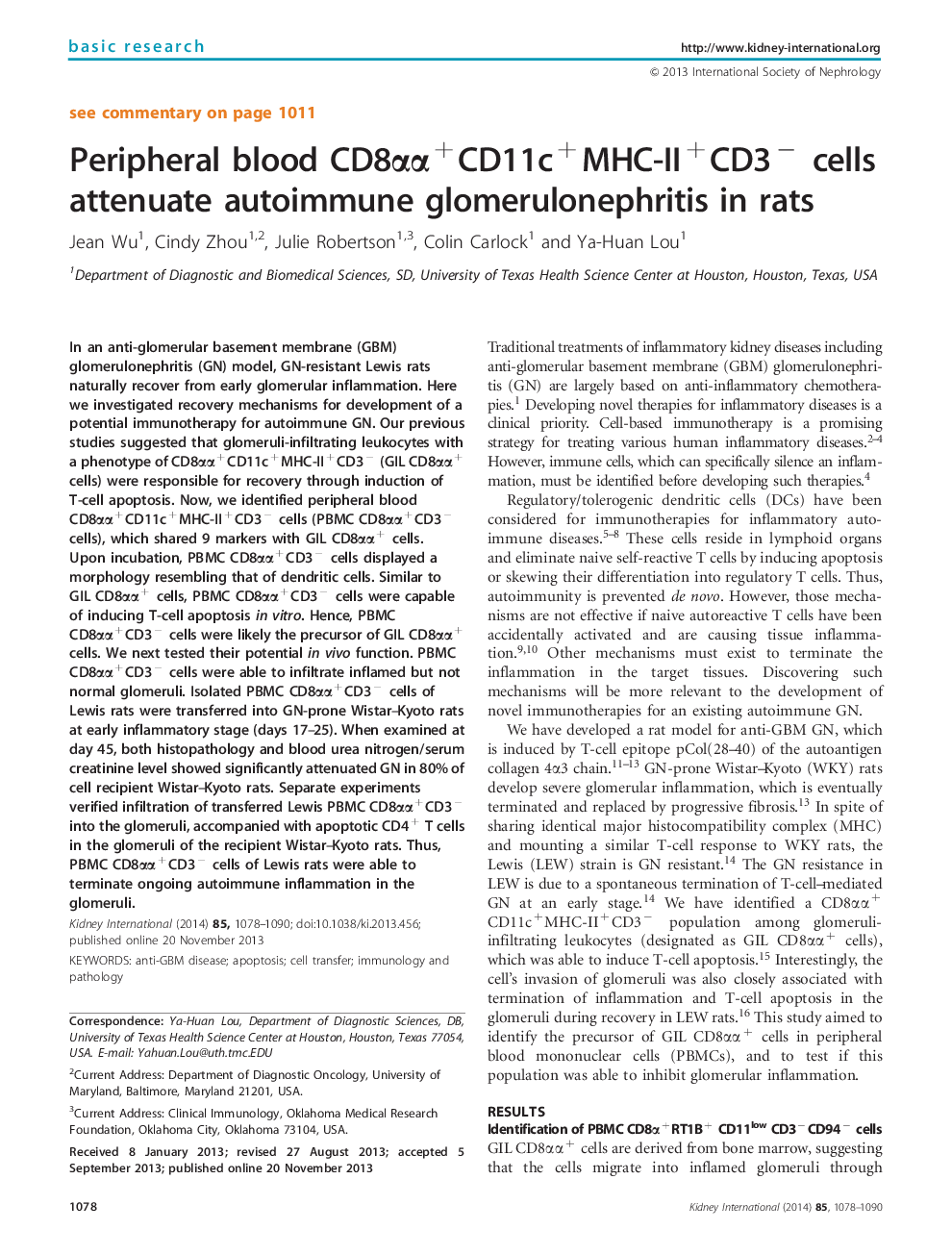| Article ID | Journal | Published Year | Pages | File Type |
|---|---|---|---|---|
| 6164642 | Kidney International | 2014 | 13 Pages |
Abstract
In an anti-glomerular basement membrane (GBM) glomerulonephritis (GN) model, GN-resistant Lewis rats naturally recover from early glomerular inflammation. Here we investigated recovery mechanisms for development of a potential immunotherapy for autoimmune GN. Our previous studies suggested that glomeruli-infiltrating leukocytes with a phenotype of CD8αα+CD11c+MHC-II+CD3- (GIL CD8αα+ cells) were responsible for recovery through induction of T-cell apoptosis. Now, we identified peripheral blood CD8αα+CD11c+MHC-II+CD3- cells (PBMC CD8αα+CD3- cells), which shared 9 markers with GIL CD8αα+ cells. Upon incubation, PBMC CD8αα+CD3- cells displayed a morphology resembling that of dendritic cells. Similar to GIL CD8αα+ cells, PBMC CD8αα+CD3- cells were capable of inducing T-cell apoptosis in vitro. Hence, PBMC CD8αα+CD3- cells were likely the precursor of GIL CD8αα+ cells. We next tested their potential in vivo function. PBMC CD8αα+CD3- cells were able to infiltrate inflamed but not normal glomeruli. Isolated PBMC CD8αα+CD3- cells of Lewis rats were transferred into GN-prone Wistar-Kyoto rats at early inflammatory stage (days 17-25). When examined at day 45, both histopathology and blood urea nitrogen/serum creatinine level showed significantly attenuated GN in 80% of cell recipient Wistar-Kyoto rats. Separate experiments verified infiltration of transferred Lewis PBMC CD8αα+CD3- into the glomeruli, accompanied with apoptotic CD4+ T cells in the glomeruli of the recipient Wistar-Kyoto rats. Thus, PBMC CD8αα+CD3- cells of Lewis rats were able to terminate ongoing autoimmune inflammation in the glomeruli.
Related Topics
Health Sciences
Medicine and Dentistry
Nephrology
Authors
Jean Wu, Cindy Zhou, Julie Robertson, Colin Carlock, Ya-Huan Lou,
